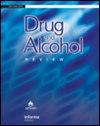Expanded access to intranasal naloxone and training among police officers in Western Australia: A pilot evaluation study
Abstract
Introduction
Naloxone has been recognised as a vital medicine in reducing opioid-related deaths by reversing the effects of opioid overdose. This study evaluates the effectiveness of a police naloxone administration pilot program in Western Australia in which officers were trained in opioid overdose management and administering intranasal naloxone. Based on similar programs in other countries, this was the first of its kind in Australia.
Methods
This pilot evaluation spanned July 2021–2022, involving pre- and post-training surveys and an online follow-up survey. A total of 229 police officers completed the pre- and post-training surveys, while 117 completed the online follow-up survey. Data collected included questions about overdose management, naloxone administration, training quality, and naloxone access and availability.
Results
There was a significant improvement in officers' knowledge and readiness to manage opioid overdose situations, particularly in recognising signs and symptoms of an opioid overdose, factors increasing the risk of opioid overdose, and appropriate actions to take in such situations after training. Among the 117 police officers who completed the online survey, 23 reported witnessing an opioid overdose and 16 reported having administered naloxone since their training. The positive impact of the training was further evident in the increased willingness of police officers to administer naloxone when encountering an opioid overdose.
Discussion and conclusions
The findings demonstrate the acceptability and training effectiveness of a police force naloxone administration program in Australia. The pilot emphasises the life-saving potential of equipping police officers with naloxone and serves as an example for police departments in other Australian jurisdictions to roll out similar programs customised to the Australian context and beyond.

 求助内容:
求助内容: 应助结果提醒方式:
应助结果提醒方式:


